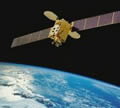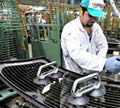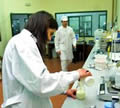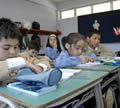- Reunión inter-regional de expertos sobre la medición de la cooperación Sur-Sur
- La SEGIB lanza newsletter con nuevas historias sobre cooperación sur-sur y triangular
- ¿Cuál es el valor de las universidades públicas hoy en Argentina?
- Una cumbre empresarial entre Corea del Sur y América Latina tendrá lugar esta semana
- Cuba en la Cooperación Sur-Sur: el camino para la integración
- Good Practices in South-South and Triangular Cooperation for Sustainable Development – Volume 4
- Global South-South Development Expo 2022 Concept Note
- Cooperación Sur-Sur en América Latina en tiempos de pandemia
- Valoración de la cooperación Sur-Sur en seis países seleccionados de América Latina y el Caribe: desafíos compartidos en la implementación de la Agenda 2030 para el Desarrollo Sostenible
- Desarrollo en transición: propuesta de concepto y medición para una cooperación renovada en América Latina y el Caribe
Intra-regional exports increased by 49% in the period 2009-2012 - a faster rate than that of exports aimed at countries outside Latin America and the Caribbean - and they are estimated to surpass US$ 210 billion by the end of 2012, accounting for over 20% of total exports from the region to third countries.
Published by Pres and Dissemination Office of SELA
Caracas, October 17- In light of the "Report on the Regional Integration Process, 2011-2012", a comprehensive analytical document published annually by the Latin American and Caribbean Economic System (SELA), the ministers attending the XXXVIII Regular Meeting of the Latin American Council will analyze the evolution, challenges and prospects of the regional integration process. The Ministerial Stage of the Latin American Council - the highest decision-making organ of the organization, made up by 28 countries in Latin America and the Caribbean - will be opened by the government of the Bolivarian Republic of Venezuela, through the Ministry of Foreign Affairs, and by the Permanent Secretary of SELA, Ambassador José Rivera Banuet on Thursday 18 October at the headquarters of the Permanent Secretariat.
The Report on the Regional Integration Process deals with the institutional evolution of such process, through an analysis of its framework and the progresses made in its different fields, including the international context, the institutionality of integration, the intra-regional trade of goods and possibilities for convergence, the integration of services, intra-regional investment, monetary and financial coordination, productive integration, and the social dimension.
The report covers the evolution of both preexisting schemes and the new modalities of integration that have emerged in recent years, including a special chapter on the Community of Latin American and Caribbean States (CELAC).
The document refers to major political, economic, commercial and social developments that have occurred in the regional and subregional integration agreements currently in force in Latin America and the Caribbean. The most distinctive features of this study are its broad coverage, in view of the variety of subjects it deals with, and its up-to-date information, since it includes recent statistical data.
According to the report, exports among Latin American and Caribbean countries have grown at a faster rate than those aimed at countries outside the region, increasing by 49% in the period 2009-2012. Moreover, they are estimated to surpass US$ 210 billion by the end of 2012, accounting for over 20% of total exports from the region to third countries.
The document also highlights that the service sector has become one of the fundamental pillars for the creation of an integrated Latin American and Caribbean space, since this sector represents the main economic activity of the region in terms of its contribution to the Gross Domestic Product (GDP).
Regarding intra-regional Foreign Direct Investments, Latin America and the Caribbean has shown great dynamism in the last few years, becoming the destination of important investment flows, both from within and outside the region. In 2011, the region received the highest foreign investment inflows ever recorded, surpassing the figures prior to the outbreak of the international financial crisis. They totalled US$155.18 billion, up 27% with respect to 2010. Many of the enterprises that have been gaining ground in terms of investments among the countries of the region are the so-called Trans-Latin companies.
The SELA document on regional integration attaches special importance to the institutional issues of integration and to the possibilities for coordination and convergence of regional and subregional agreements, as well as the social dimension of integration, which has become a central issue for Latin American and Caribbean governments.































